“Ash Grey And The Gull Glides On“ – moments of a little conversation about falling in love with this and that
Listening to this album from the label „Clay Pipe Music“, I fell in love with it on first sight and sound. I sent Tommy Perman some questions, he sent them to Andrew Wasylyk. And what you read now are some of their written answers. I skipped my questions and edited the stuff a little bit. At the end Tommy added the lyrics from the only song of the album, „Be The Hammer“, the closer, the final piece, written and performed by Aidan John Moffatt. Now this little talk starts with the lyrics. My proposal: read them carefully before listening to the whole album in a row.
We sign our names on walls, across grand hall and malls; we shout in silence, we whisper loud. We fight our foes unseen, well-mannered and well mean; we are not precious, we’re not proud. With all this noise around us, no one has seen or found us. They scoff, and scorn and fear us; we just want some ears to hear us. We steal your time, your air; you wash us out your hair. We are the dead, the disavowed. We live in cracks and corners, we are the merry mourners. We are the raindrops, not the cloud.
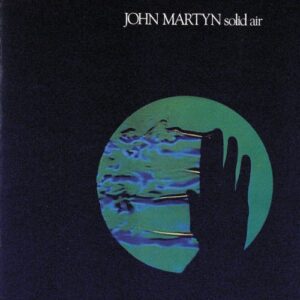
Tommy: „Ash Grey And The Gull Glides On“ is centred around the upright piano in Andrew’s studio. The first project that Andrew and I collaborated on was a music video for his song “Mariner’s Hymn” some years ago. The simple idea for the video was to beam footage of the North Sea and the East Coast of Scotland onto the piano as Andrew played. During the making of the video I became quite fascinated with the mechanical workings of the upright piano. Slowly an idea for a musical collaboration began to form in my head. I started thinking of the prepared piano of John Cage but also the more contemporary uses by German composer Hauscka where he makes electronic-sounding music from a prepared piano. I thought of these inspirations as starting points. At the time I was experimenting with unusual electronic production techniques, searching for ways of fusing Andrew’s piano-playing with unconventional sounds. Then just before the first coronavirus lockdown in the UK I designed a set of recording instruction cards for Andrew and mailed them to him.
Andrew: Given half the chance, Tommy overflows with great ideas. Early on in our collaboration he designed some beautiful instruction cards and posted them to me. Sets of ‘Recording Instructions’, ‘Chord’ and ‘Tempo’ cards. On them printed instructions, like: “Slap the back of the piano with the palm of your hand. Repeat 10 times in different places.” And “If it’s dark outside: 130bpm. If it’s light: 90 bpm.” I found them inspiring and ended up with a load of recordings with a wide range of noises from my upright; knocks, clangs, creeks and scrapes of the piano strings. Tommy manipulated these, diced them up, passing them through numerous effects and processes to shape our approach for the album.
Tommy: I think both of us had lots of different inspirations for each track on the album. But a few artists who frequently come to mind for me are Arthur Russell, Charles Stepney and Kaitlyn Aurelia Smith. All three I admire for their playfulness and studio innovations but also because their music is catchy and accessible.
Andrew: Balearic, Suzanne Ciani, ‘Pet Sounds’, and everything in between.
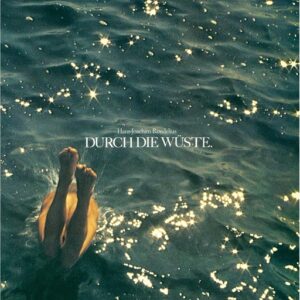
Tommy: I love that you are hearing these references to Cluster, to Moebius and Roedelius on our album. It’s an honour to be compared to such great musicians but they weren’t consciously on my mind while working on this collaboration. I particularly enjoy the „Cluster & Eno“ album and „Zuckerzeit“. I don’t know much about the solo albums of Moebius and Roedelius – can you recommend some things for me to listen to? Where is a good place to start?
Michael: My first choice would be Roedelius‘ „Durch die Wüste“, and „Rastakraut Pasta“ by Moebius & Plank, both with the magic of Conny Plank in it.
Tommy: Andrew’s willingness to experiment musically! It has been such a fun musical conversation. I approached our collaboration in quite a playful manner and created some pretty weird music sketches to share with Andrew and I’m so in awe of how he responded. It was always such a treat to hear his ideas.
Tommy: The album is largely instrumental but many of the tracks feature subtle vocalisations, wordless sung choruses and words used as almost ritualistic chants. To me it felt like the album was building towards a finale that should include a full vocal. While Andrew and I are both huge fans of instrumental music we also share a love of poetry and spoken word. We are huge fans of Aidan Moffat from the band Arab Strap. I have been lucky enough to get to work with Aidan a few times before, but it was Andrew’s idea to send the instrumental of Be The Hammer to him…
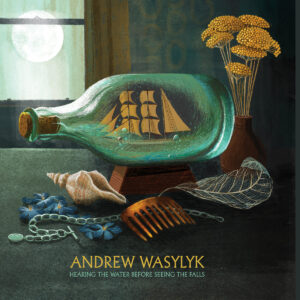
Andrew: It was a real thrill collaborating with Aidan and Tommy on this. I’ve followed Arab Strap since about „Monday At The Hug And Pint“. Aidan’s record with Bill Wells, „Everything’s Getting Older“, is really special. As the melodic structure grew for this track, I began to imagine a story weaving through it and thought I’d chance my luck and knock on Aidan’s door. I think he may have partly written the lyrics while away on tour with Arab Strap.
Andrew: To me it feels like the label Clay Pipe have created a world you can consistently invest your emotions in. Much of that stems from the identity and magic in Frances Castle’s artwork (the Clay Pipe founder), as well as her generosity, support and encouragement. In a very male-dominated industry it’s important to acknowledge how female leadership, such as Frances’, is successfully making a culture of creativity and a change for good.
Tommy: Frances Castle runs the label on her own and does such an amazing job. She has built up such a distinctive character for the record label through her careful curation of music and her individual visual style across all the album covers. I’m so happy that our album is part of the Clay Pipe catalogue! The cover for this one… it’s a memorable and eye-catching design. I love the bold geometric cover she created. It works great digitally but even better printed as a 12” album sleeve.
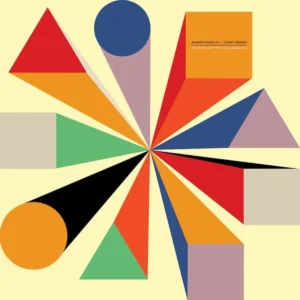
Michael: Indeed. The cover of Andrew’s last solo album on Clay Pipe Music looks promising, too. Waiting now for the music inside of „Hearing The Water Before Seeing The Falls“. A freshly pulsating, new English underground, kind of. Some call it „Grassroots Electronica“.Tommy: Recently fell in love with Daisy Rickman‘s „Howl“. Daisy’s songs have the right mix of catchy vocal hooks and transcendental arrangements to get lost in. Her music is reminiscent of many of my favourite artists but with a freshness that really appeals to me. The entire album is written, performed and produced by Rickman at home. She even did the cover artwork, designed the sleeve and released the vinyl herself. It’s a very impressive piece of work. And then there was „My Noise Is Nothing“ by Lord Of The Isles & Ellen Renton. Although this came out at the end of 2023 I didn’t properly listen to it until quite recently. „Lord of the Isles“ is the moniker of Scottish electronic producer Neil McDonald. His collaboration with Edinburgh-based poet Ellen Renton works so well. Ellen’s words and delivery are a perfect match for Neil’s soundscapes and electronic rhythms.
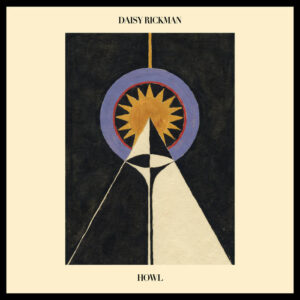
Tommy: Speaking of three desert island albums, there is, at first, Nina Simone’s „Tell Me More“. My mum used to review records for a newspaper and so I grew up with lots of great albums in our house. This album really caught my attention as a moody teenager and I often listened to Sinnerman and Strange Fruit before going to sleep. I know lots of people prefer Billie Holliday’s version of Strange Fruit but the way Nina Simone sings it sends shivers down my spine. I find her voice so full of emotion, it affects me deeply.
Tommy: Then John Martyn’s „Solid Air“. I can’t even guess at how many times I’ve listened to this album and I don’t think I’ll ever tire of it. Everything about it, the songwriting, John’s liquid vocal performance, the combination of instruments and incredible musicianship make it a near perfect record for me. Danny Thompson’s double-bass and Tristan Fry’s vibraphone are so good. I find it a deeply comforting album to listen to.
Tommy: As number three William Onyeabor‘s „Who is William Onyeabor?“ pops up. If these really are my only three albums to listen to on a desert island then I need something uptempo to stop me from wallowing. I discovered William Onyeabor’s music shortly before this compilation on Luaka Bop was released. All of the music is so joyful and the grooves are so infectious that it never fails to brighten my mood.